Part 1: Planning and managing ski life/selecting used skis.
As most Long Time skiers (especially those with a race background) know, Skis Change with time. What I am attempting to address here is how to manage your family quiver to maximize the useful life of your skis. I will talk about:
Buying and Selling
Construction types
Disciplines (Slalom, GS etc.)
Skier-Age considerations, ages 3-18
Re-use, resell, repair, or scrap.
Buying and Selling Skis: Buying used skis is always challenging because it is so hard to know what you are getting. If buying from another family on the team, you at least have some idea of how the ski was used, how it was maintained, and how it performed. In general, the More you Know about a ski’s history, the more the ski is worth. The less you know, the less it is worth and the greater chance of it being a bad deal.
Construction types: In general, there are 2 types of construction used on high performance and race skis: Cap and Laminate. The third main construction (torsion box) has fallen into disfavor and is mostly used on recreational skis as it is cheaper to make.
(cap ski)
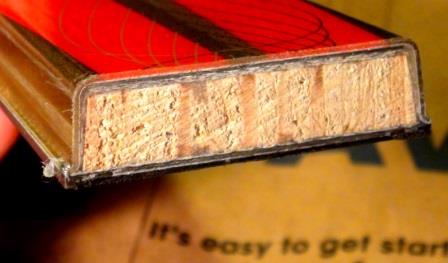
Cap skis (most Atomic, Salomon and Elan) wear invisibly because the graphics are molded into the construction. The ski might have lost all of its “pop” and liveliness but still looks like new. The age of the ski and the days of use must be tracked closely or you might give your racer a dog of a ski- without even knowing it. In the picture above, you can see that the colors are as thick as the entire top (and side) layer of the ski.
(laminate ski)

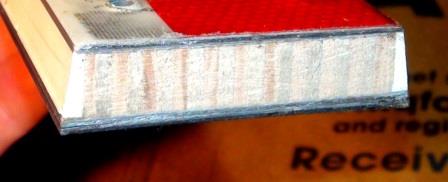
Laminate skis (Nearly all other manufacturers) wear externally because the graphics are just painted onto the ski, then covered with a clear coat. Each day of use on the ski shows dramatically. The tops begin to peel off, cut develop on the top edge, etc. Sometimes the skis begin to delaminate after really hard use. It is much easier to tell how old the ski is and how hard it has been used. In the picture above, you can see the graphics are paper-thin.
Race Discipline: This is critical. The useful life of the ski is totally related to its discipline. In general, skis lose edge hold and “pop” over time, but they gain glide speed and forgiveness.
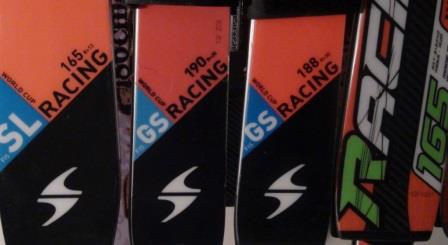
Slalom skis are best (after proper prep) right out of the box. However, some (see next section), lighter skiers MAY appreciate an older Slalom ski.
Giant Slalom skis typically are best after a couple of days of use, and they can stay really good for quite a while- depending on snow conditions, maintenance and damage.
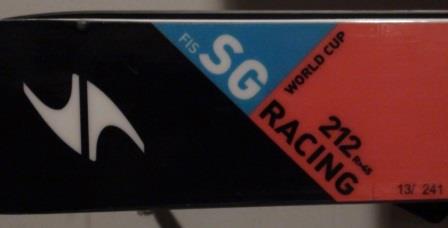
Speed skis (SG and DH) get faster and faster with use- until they start to wear out or are damaged beyond repair. Knowing the seller and the history of the ski is important too. Speed skis often bend during a crash. A ski that is bent back MAY be OK, but it is important to know if the ski has suffered any crash damage.
Skier Age: Very few kids younger than 5 or 6 really “push” a ski. They do not yet have the strength or speed to develop a lot of force. So the littlest skis tend to last a long time. Perhaps TOO long- because those little, light bindings take a beating and are rarely given any attention. There are many obsolete kids’ skis out there- too old to be useful. About 5-6 years is the maximum useful age of this type of ski. Also- the flatness of the bases and condition of the ski edges IS ULTRA CRITICAL for the youngest skiers. Early proper ski technique fundamentals include balance, edge control and rotary motions. A flat ski responds properly and rewards proper motions with great performance. A concave ski (80%+ of little kids’ skis I have seen) will not respond properly and the skier learns to force the ski to do what they need. This is a bad habit and can take years to unlearn. A convex ski (or skis that are too short) will wander and hunt. Such a ski can make a young skier (understandably) nervous about going fast. Learning to let a ski run (glide) is another basic skill that a young skier can learn and use their whole life. It is best to start them out right with flat skis and smooth, burr-free edges. A little work on skis at this age will pay BIG dividends later.
Grade school age (6-11) kids have a HUGE range of skier ability and size. The main factor in successfully choosing skis (and all ski equipment) at this age is to Stay On Top of their needs. DO NOT buy too early for future needs, and DO NOT WAIT until “next season” if they out-grow (or ski out of) current gear. As an example- I watched 1 parent buy their daughter skis that were 2-3 years too advanced for her. They made a “great deal” on some excellent skis, and it just seemed like a good decision. The poor girl skied 1 day on the skis, got frustrated and quit racing all together. Shame- she was one of the better skiers in her age group up to that time. Your kid’s coaches are your best source of advice about gear needs. Very few ski stores really understand what racers and high performance kid-skiers need- or have the gear that they need.
Middle and High School kids: Again- there is a HUGE range in size and ability, but in addition there are ski regulations that begin to come into play. One of the BEST ways to buy used skis for this age is to buy from families/skiers that you know. Since I mentioned that Slalom skis “age” and lose pop fairly quickly, 1 option is to buy a slight worn ski from a heavier, stronger skier. One of my best friends used to sell me his “worn out” Slalom skis. He was about 35lbs. heavier than I was. By the time he softened them up a bit, they were perfect for me! GS and Speed skis last longer, but ski regulations must be considered too. Skiers should be progressing up in size so that they will be ready for FIS skis when they get to that age.
(this is a repairable bend)
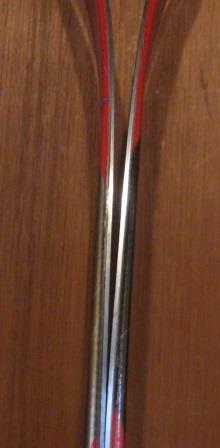
Re-use, Repair or Scrap: If you have ever been in my shop or hung out with me in a wax room, you know I will try to fix almost anything- for fun/challenge if for no other reason. But having done all those repairs, I can tell you sometimes it makes more sense to just throw the skis away- or down-cycle/recycle them if you are more creative.
(this bend is not repairable- the ski is splitting)
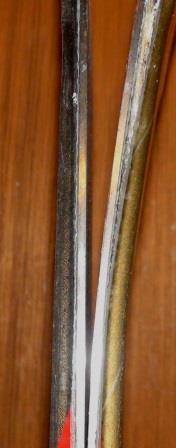
Bent skis CAN be bent back- most of the time. The skis will not be as strong as they once were, but they will keep going. Occasionally, the skis are actually better after suffering a big crash and being re-straightened. This mostly happens with Speed skis, which sometime glide better after such abuse. The process of straighten a bent ski isn’t too hard, I have taught several people how to do it but I will not explain it in print. Re-Use Bent skis whenever possible.
(repairable de-lamination)
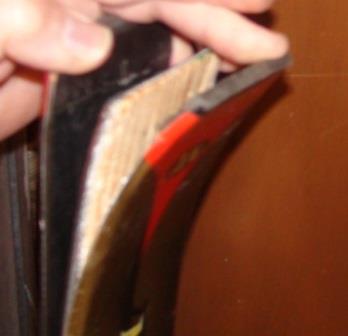
De-laminated skis CAN be successfully re-glued back together- more often than not- but this should only be done to skis out of warranty and that won’t be resold. If I do major repairs on a ski, I generally give them away when we are done using them. I consider them to have ZERO resale value. The main challenge is opening the ski up enough to get glue back into the ski. Then all you have to do is clamp the ski together and wait for the glue to dry.
(this is a ski that has been badly over-heated. the base is pulling away from the core)
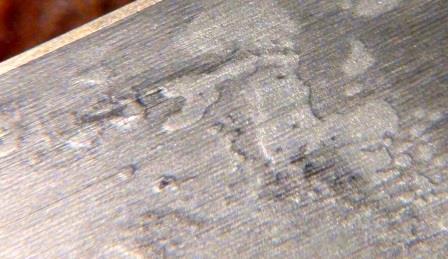
Base repairs can range from simple scratches to whole sections of the base being torn away. How much you choose to do will depend on your skill and determination. The resale value of the ski after a major repair is very little, but they can often be made to ski pretty well. I repair most damage because we wear out enough skis. I try to fix whatever I can to save money.
(this ski will require extensive base patching. it was brand new...)
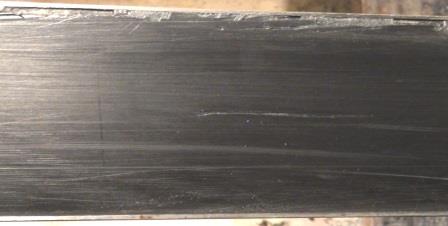
Scrap? IF the ski has suffered traumatic damage (broken core or laminate, torn edge, a bend beyond about 30 degrees), it is time to throw it away. I have made such skis into Trophies or other Non-skiing use, but such major troubles are beyond reasonable repair. The only exception is keeping ONE ski if only 1 of a pair is damaged. Pairing together odd skis which would you normally not think of as a pair CAN be done. It is worth experimenting, if you are so inclined.
In case you are wondering, most of these skis were destroyed in my shop. Such is the fun of being Gadget!